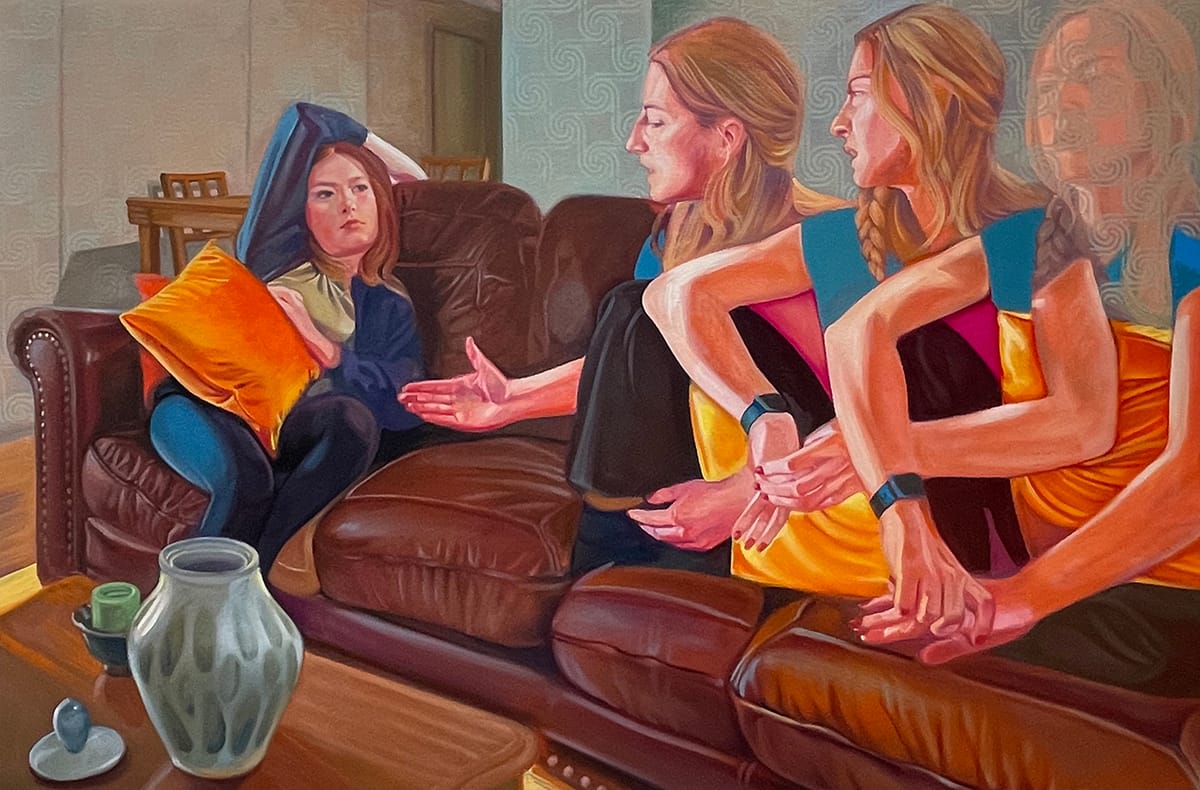A surprising combination: Casey TZ Smith and Sheldon Draper at Mark Arts
Spend enough time with this exhibition, and you'll discover surprising connections between the work of two very different artists. "Synthesis & Blues" is on view through July 20.
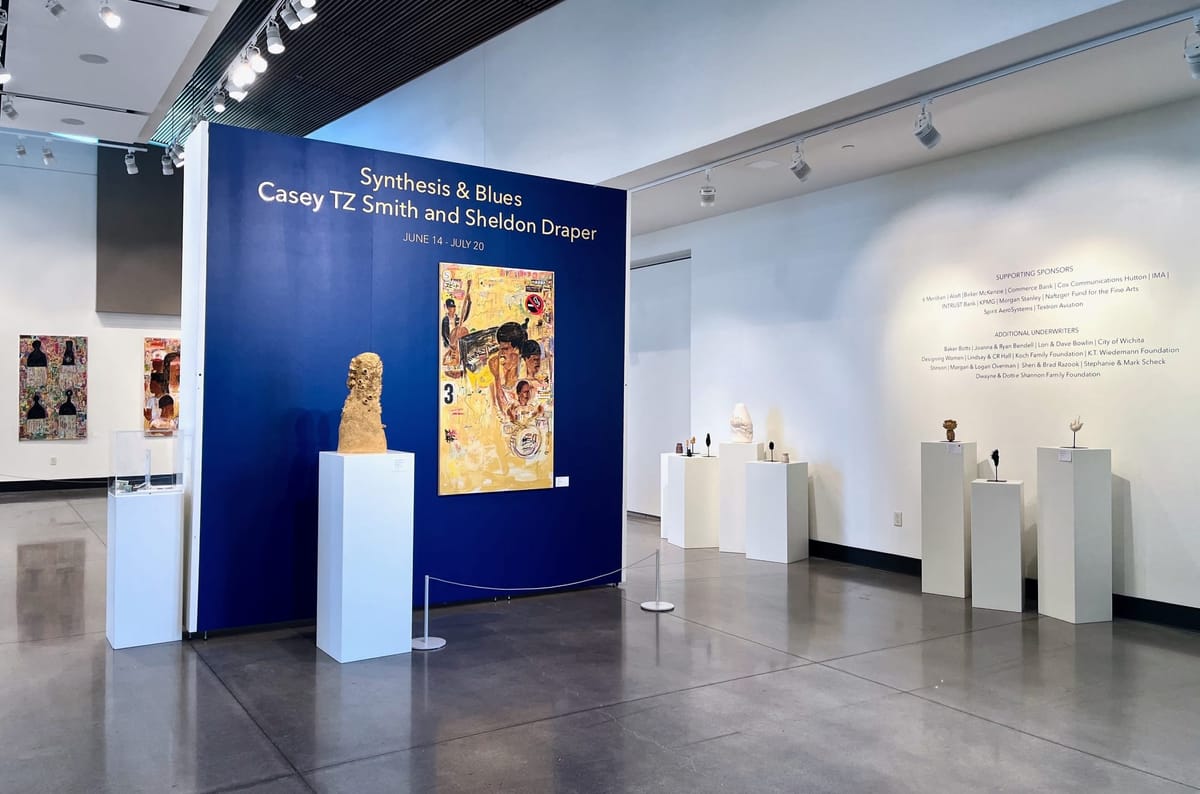
The work of Sheldon Draper and Casey TZ Smith don’t quite match. Yet Draper’s sprawling mixed-media paintings of Black urban life and Smith’s delicate, nature-inspired ceramic sculptures have shared space in Mark Arts’ Gladys and Karl T. Wiedemann Gallery since mid-June.
“Synchronicity & Blues: Casey TZ Smith and Sheldon Draper,” on view through July 20 at the east Wichita art center, is rooted in something like happenstance. Draper and Smith earned the exhibition opportunity through Mark Arts’ annual fundraiser Versus, which centers around a live-art-making competition. Entrants have 20 minutes to create a new work, then judges award a top prize in two categories: 2D and 3D.
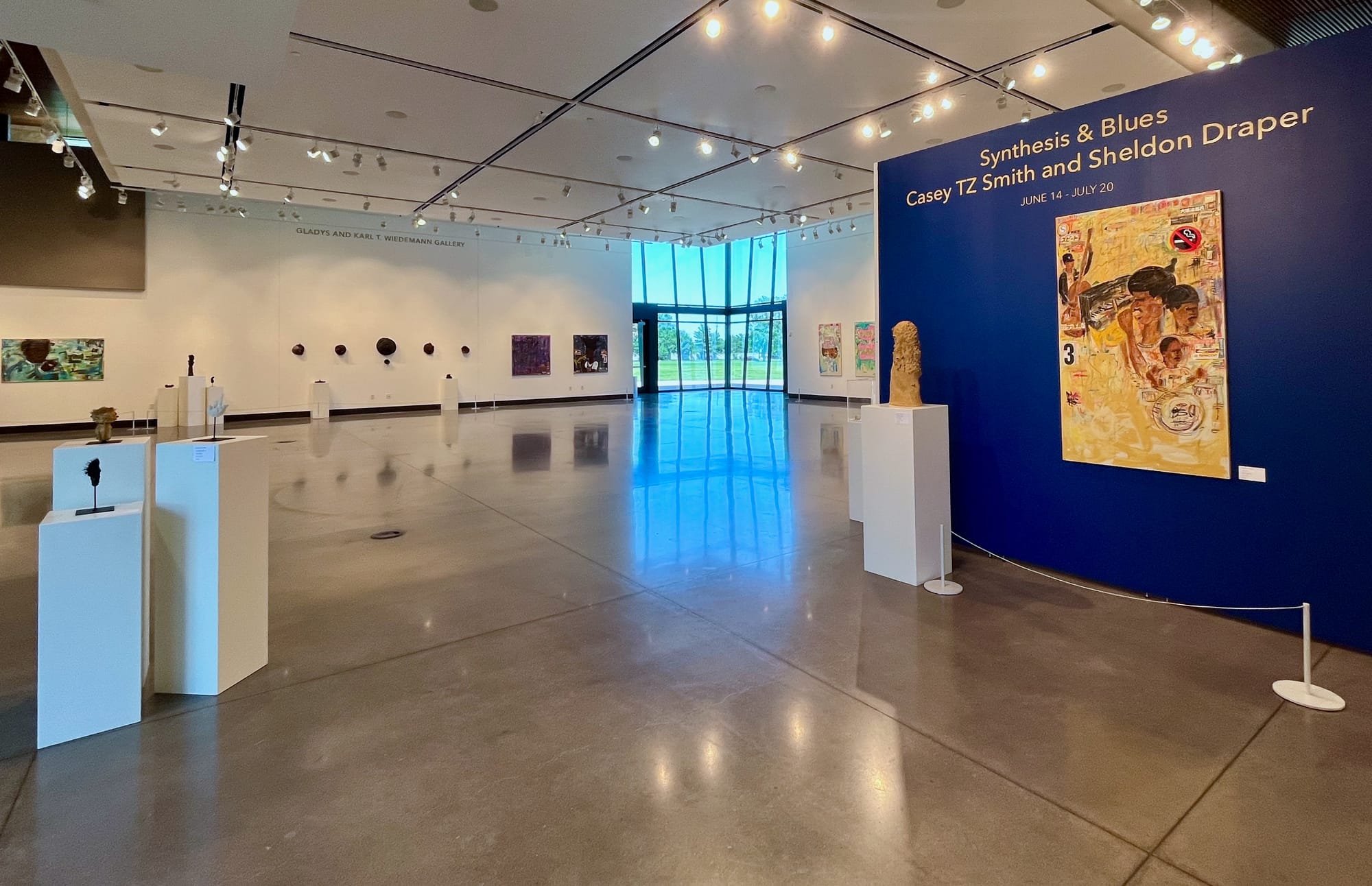
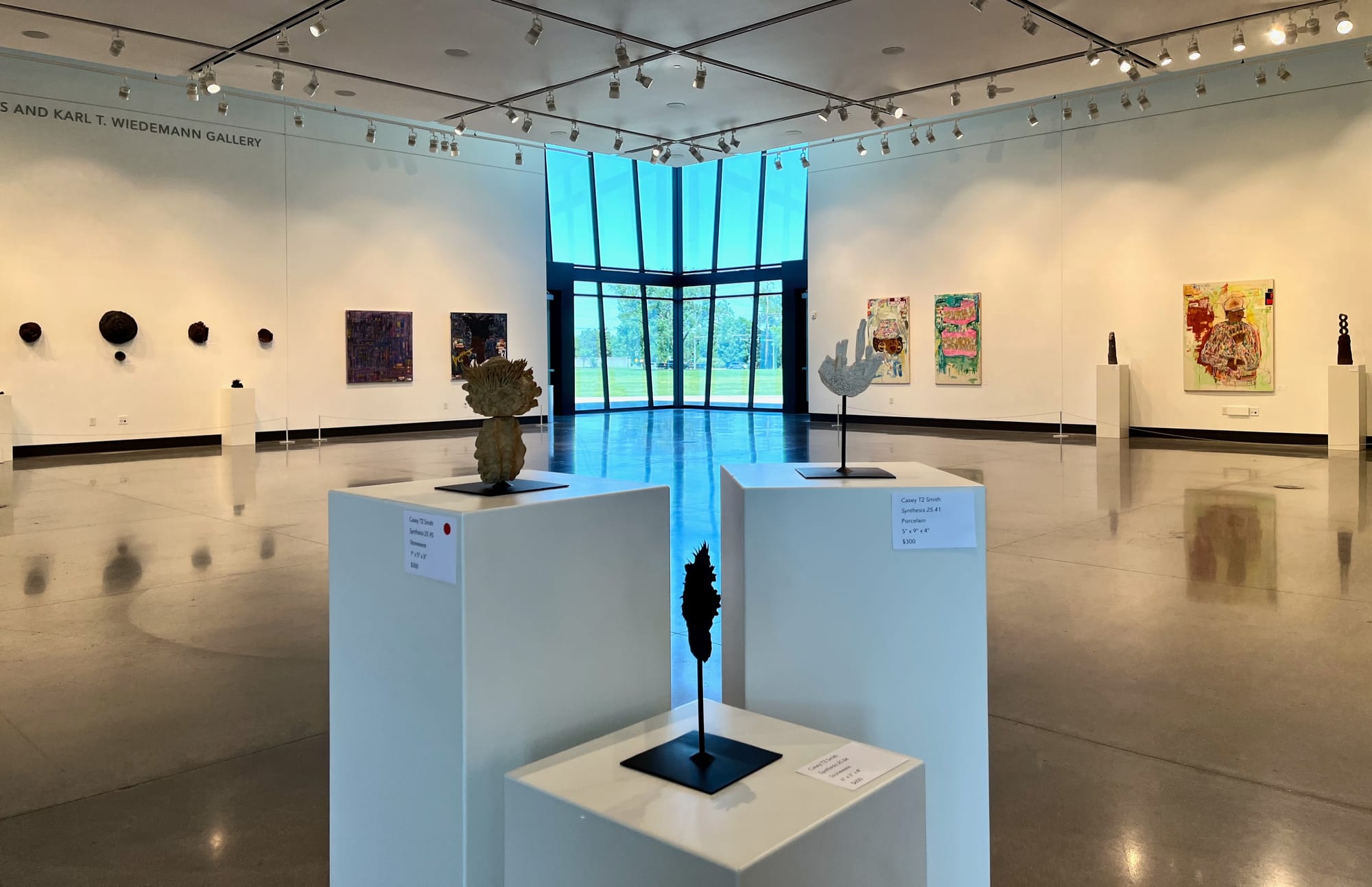
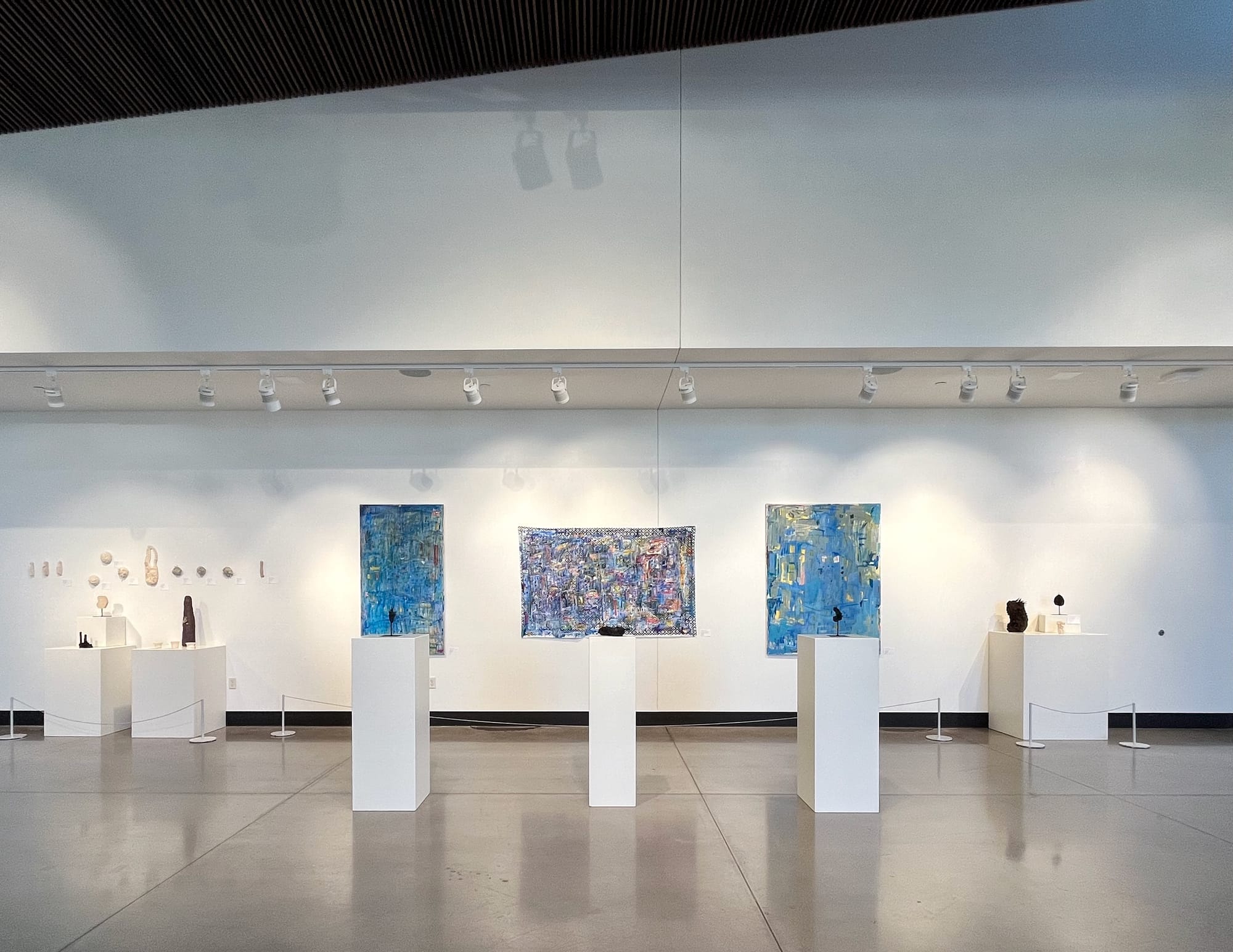
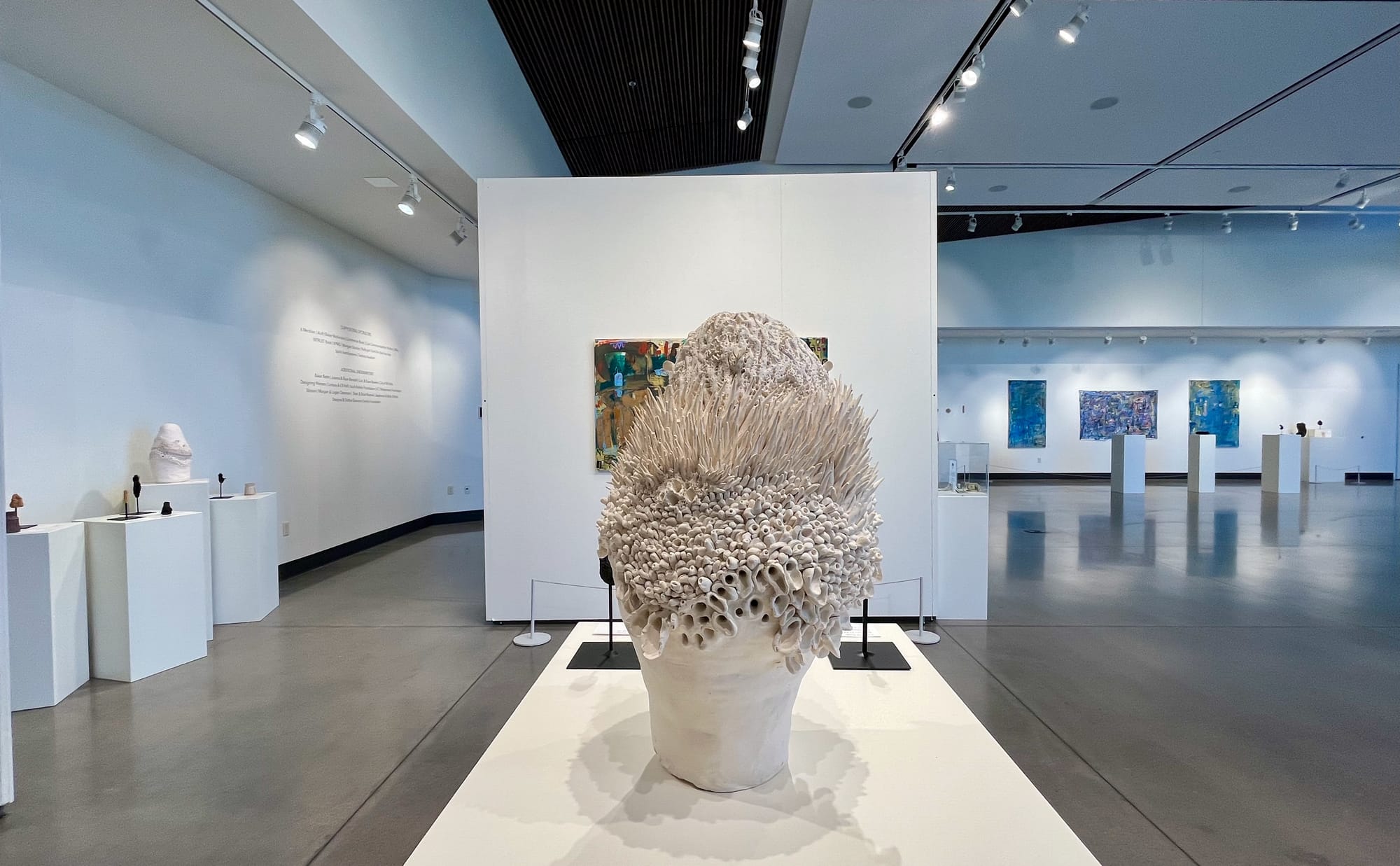
"Synthesis & Blues: Casey TZ Smith and Sheldon Draper" is on view at Mark Arts through July 20. Photos by Emily Christensen for the SHOUT.
“Synthesis & Blues” could only have happened through chance — no curator would have ever paired the work of these two artists. Yet, after enough time, connections begin to appear.
Our free email newsletter is like having a friend who always knows what's happening
Get the scoop on Wichita’s arts & culture scene: events, news, artist opportunities, and more. Free, weekly & worth your while.
No spam. Unsubscribe anytime.
Smith, a recent Wichita transplant who earned a Master of Fine Arts in ceramics from Fort Hays State University, fills her share of the gallery with delicate stoneware sculptures based on nature. Even if your last biology class is a distant memory, you’ll recognize the familiar shapes of coral, lichen, barnacles, and other organisms whose symbiotic nature is central to their existence. Smith mounts some of the smaller works on metal bases, like specimens displayed in a natural history museum.
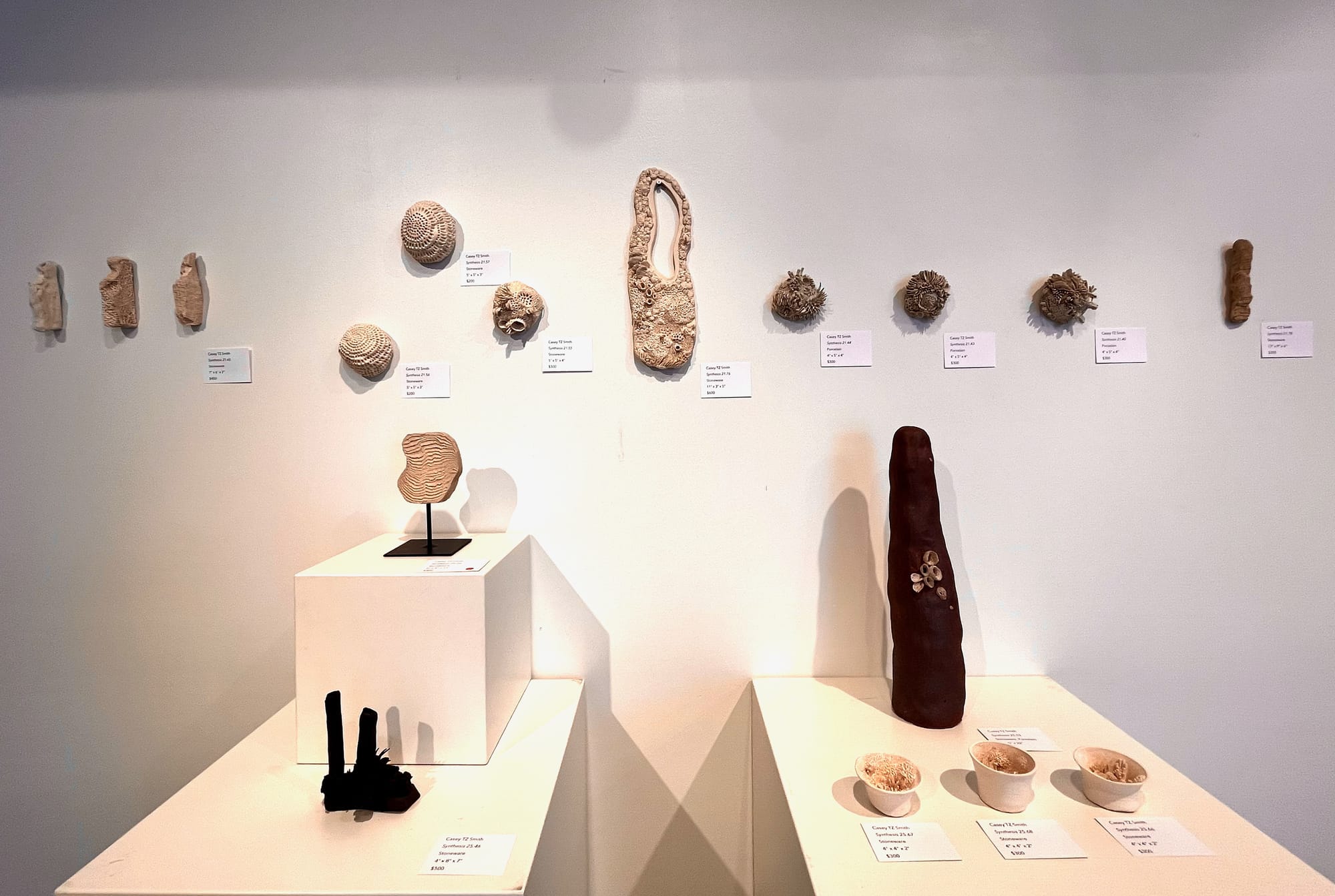
These sculptures, which are numerous, range in color from off-white to near-black. Given their monotone shades and repeated details, they look quite similar at first glance. But Smith’s work rewards patient viewers: once my eyes adjusted, I began noticing how different they are from each other. I’m no biologist, but the experience reminded me of the focus required for scientific observation, a way of seeing available to anyone but seldom practiced in everyday life.
The most pleasurable aspect of Smith’s “Synthesis” works are how they are simultaneously obvious dupes and extraordinarily lifelike. “Synthesis 25.49,” an organic, crownlike sculpture composed of scores of delicate points (an invertebrate plucked from its ocean habitat?), looks as though it has been rearranged by a current rather than built from clay with two potter’s hands. “Synthesis 21.73,” which resembles a lichen-covered protuberance or burned-out stump, appears weightless. As it is 20 inches in diameter and composed of stoneware, I know that it’s actually quite heavy, but I have to remind my stubborn brain of this fact every time I look at it.
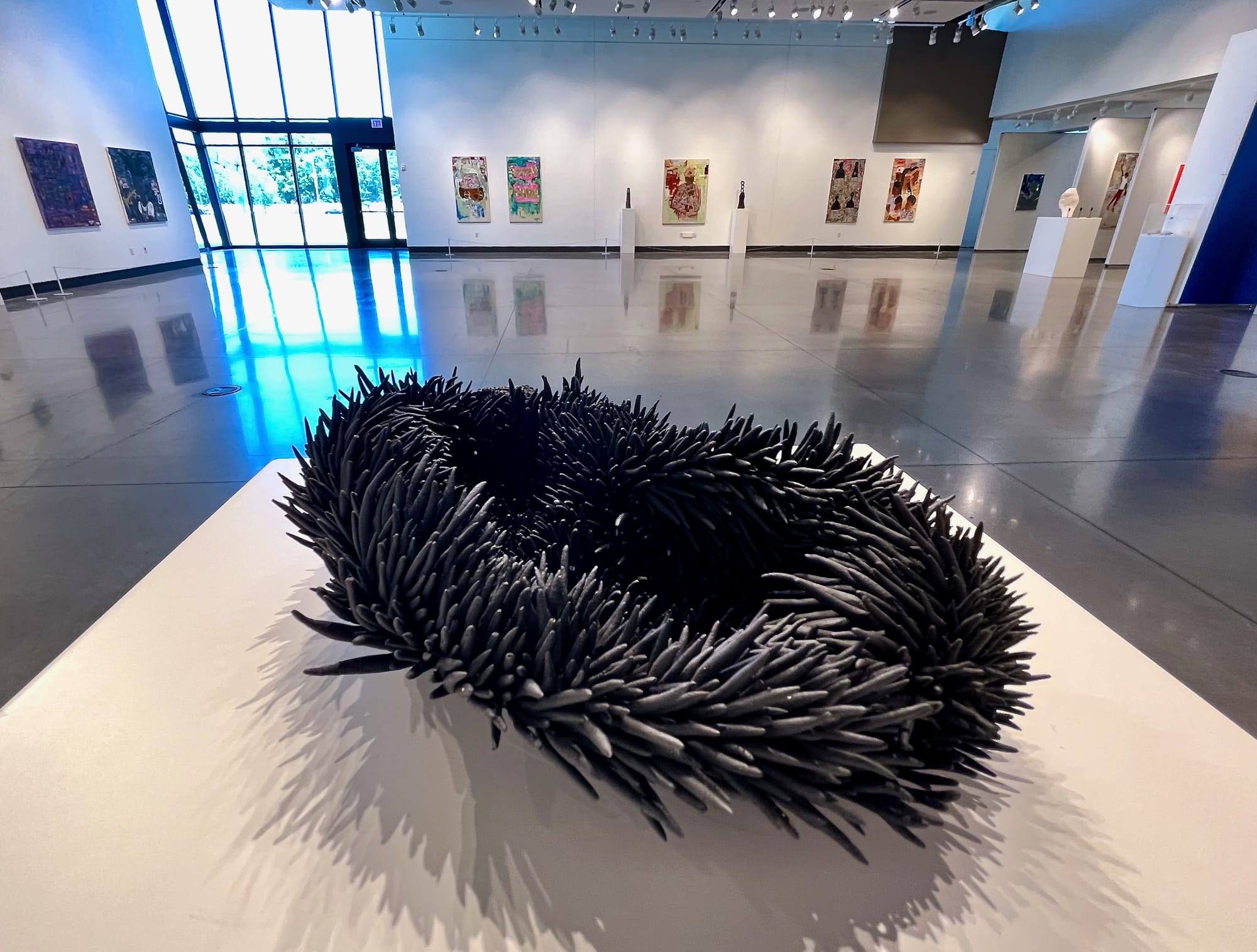

Works by Casey TZ Smith from left: “Synthesis 25.49,” stoneware, 11 by 3 by 5 inches; “Synthesis 21.73,” stoneware, 20 by 19 by 9.5 inches. Photos by Emily Christensen for the SHOUT
“Synthesis & Blues” is the first opportunity for Wichita gallery-goers to see a significant amount of Smith’s work in one place, which is a solid argument for catching this show before it closes this week.
While Draper’s work veers more toward chaos than precision, the painter builds meaning through a lengthy process of collecting paper ephemera, which he incorporates into his mixed-media works. In paintings of jazz musicians, city blocks, and basketball courts, the detritus of everyday life appears, including items like sugar packets, cigarette boxes, magazine clippings, gum wrappers, receipts, packaging for food, and clothing. The words and numbers hint at meaning here and there, but more than anything these collaged works remind me of the creative grist the world offers us in every trip to the store, every exchange of cash for goods. Draper is working within a tradition of artists with limited resources, such as James Hampton, the Gee’s Bend quilters, or even Kansas’ M.T. Liggett, who have always sourced materials from their environment.
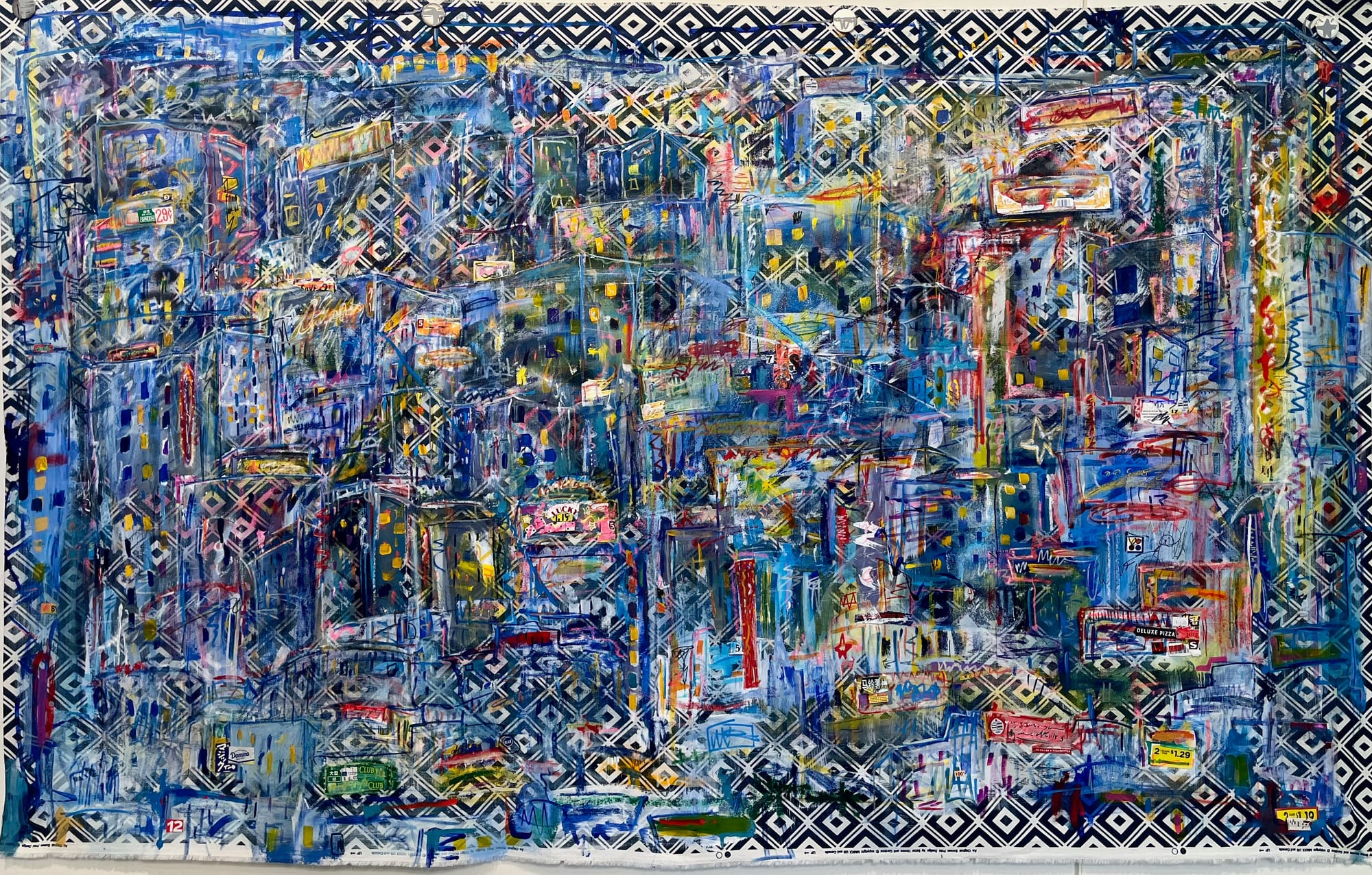
Sheldon Draper, “Memories of the City Take 1,” mixed media on fabric, 44 by 72 inches. Photo by Emily Christensen for the SHOUT
Though Draper usually makes paintings from the foundation of a hard surface such as gessoed canvas or wood panel, in “Memories of the City Take 1,” he experiments with a fabric base — hence the quilting comparison, which I hadn’t considered before but now seems obvious. In each of his three “Memories of the City” paintings, he leans into abstraction. But many of the paintings in this exhibition return to a familiar subject of Draper’s: jazz. In groups and alone, his subjects blow horn solos, play piano and smoke a cigar simultaneously, and keep rhythm with an upright bass. Like his jazz heroes (one painting is titled “Ellington Indigos,” after the composer and band leader Duke Ellington and his renowned “Mood Indigo” track), the works feel instinctive, improvised.
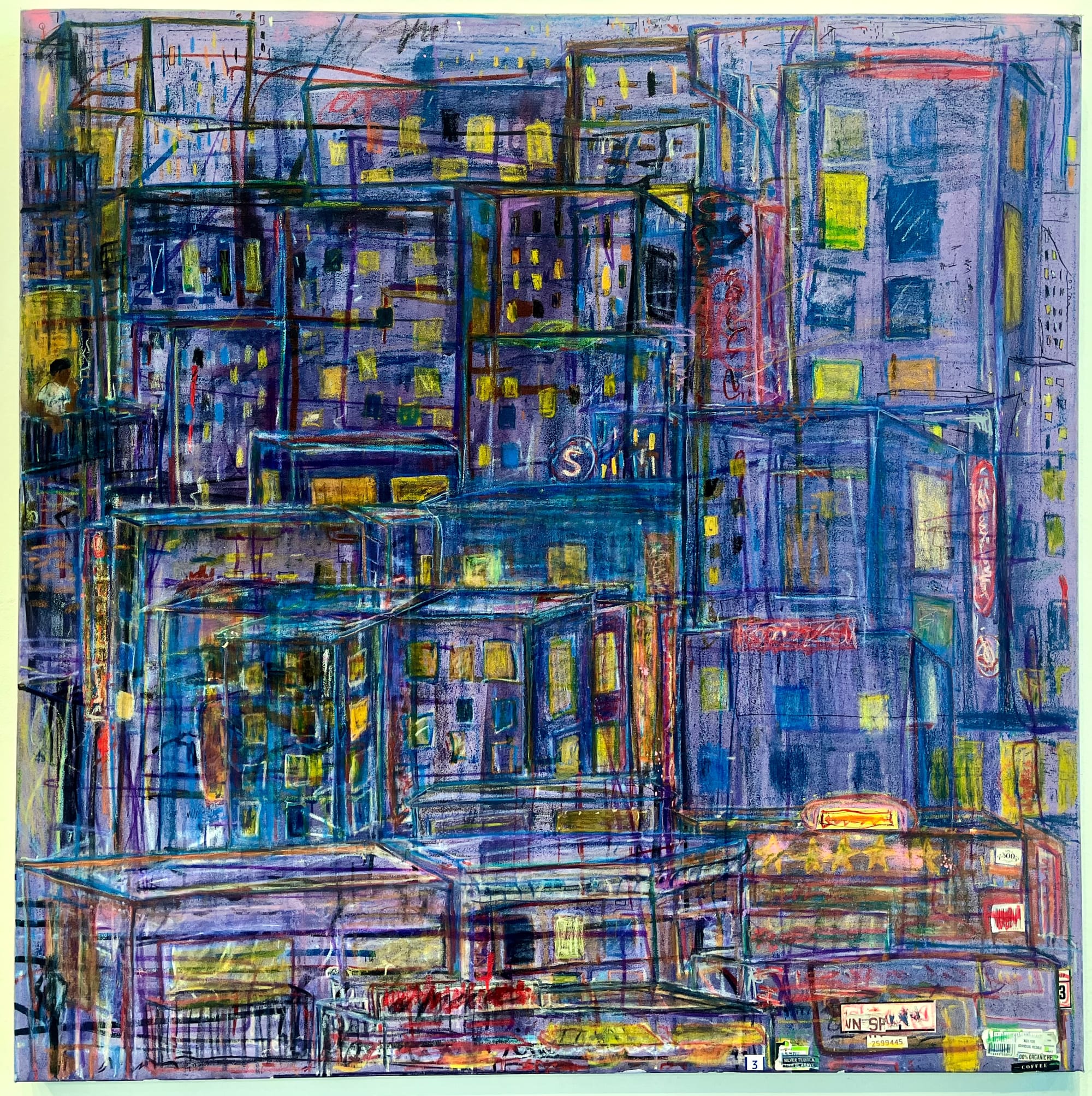
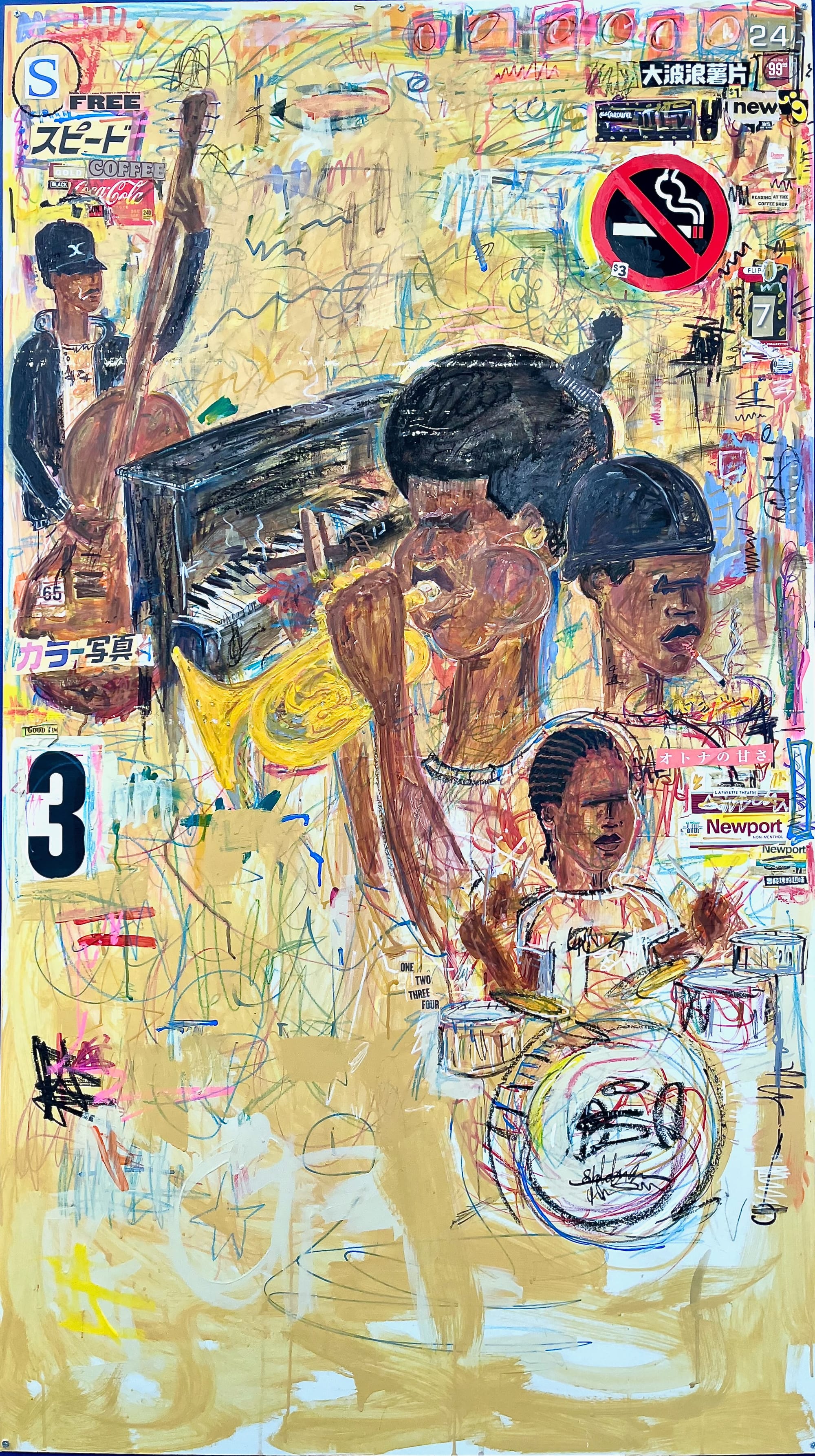
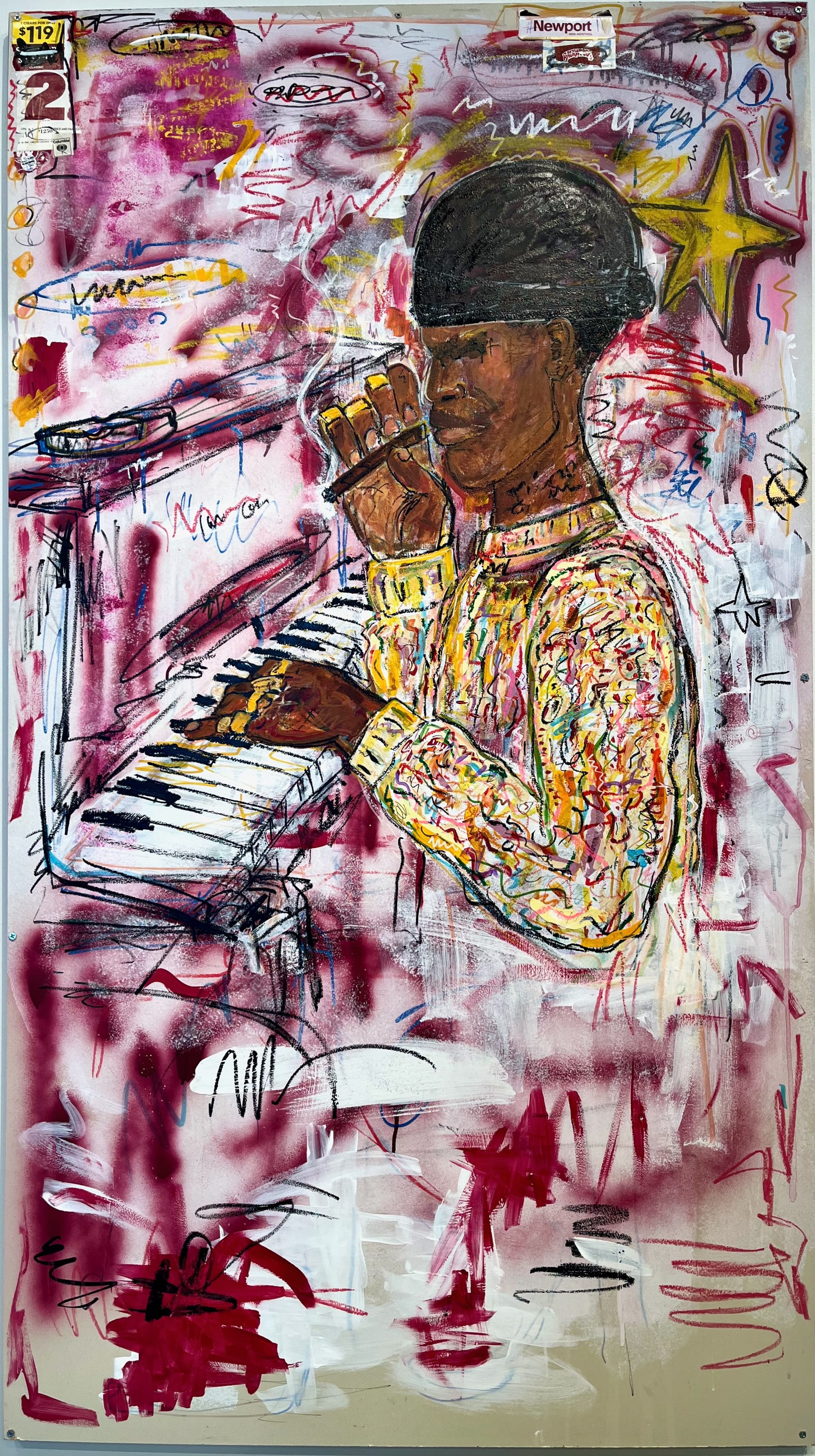
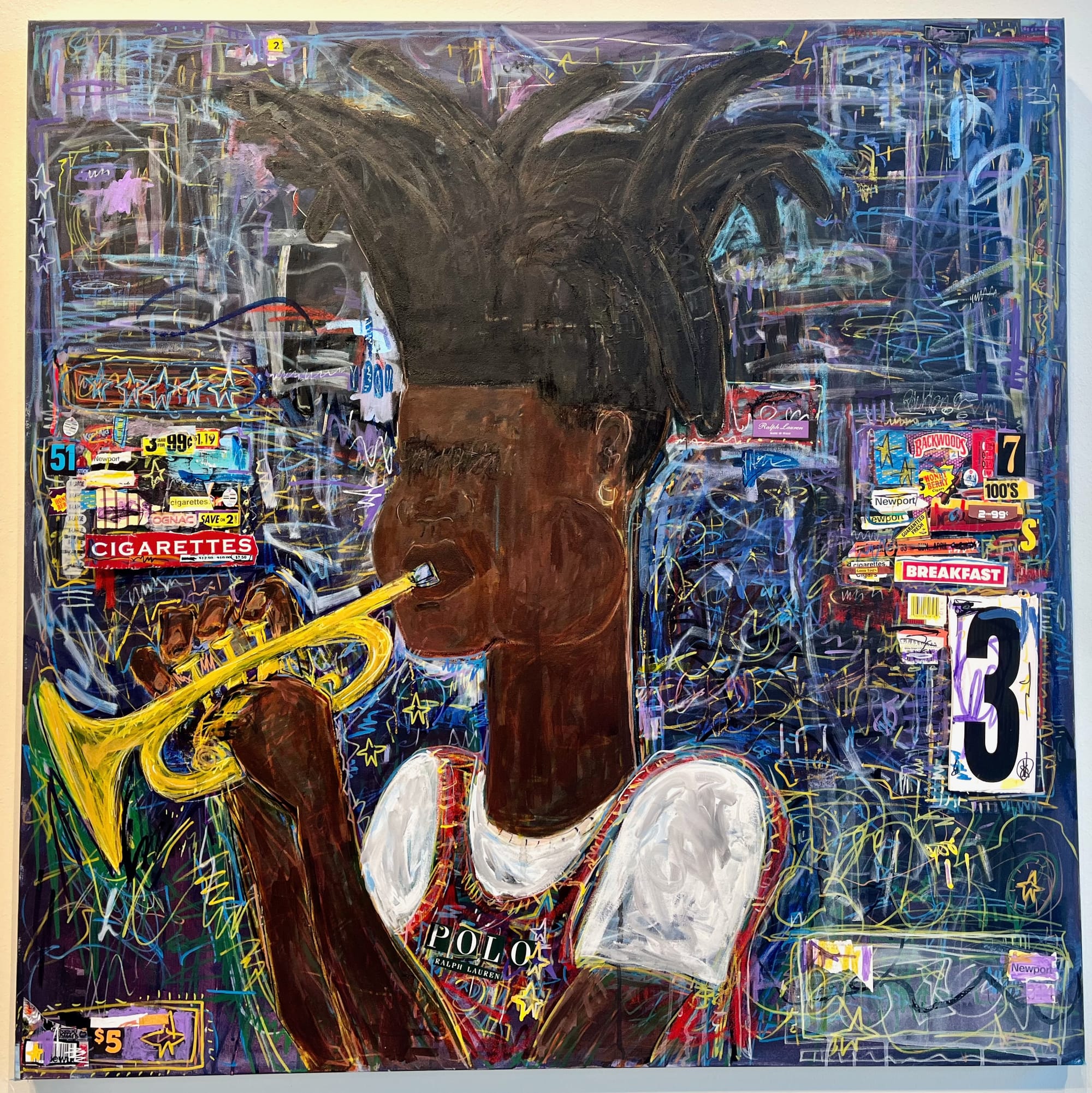
Works by Sheldon Draper, from top left: “Ellington Indigos,” oil pastel, 48 by 48 inches; “Jazz Fest,” mixed media, 62 by 35 inches; “3 a.m.,” mixed media, 62 by 35 inches; “Solitude,” mixed media, 48 by 48 inches. Photos by Emily Christensen for the SHOUT
Draper is easily one of Wichita’s most well-known and promising young artists. His work has been exhibited at Mulberry Art Gallery, Reuben Saunders Gallery, and Art House 310, among others; he has at least one painting in the Emprise Bank Collection; and he has been featured twice on KMUW. In “Synchronicity & Blues,” Draper shines in the small moments — a figure smoking on a balcony in a vast cityscape, beringed hands, an afro pick with a handle shaped like a fist. In aggregate, though, his half of the exhibition feels a bit unfinished in places, not always as layered or with as much detail I’ve come to expect from his work. Is he experimenting with larger planes of color, I wondered, or did he run out of time? Even with a year to prepare, the Mark Arts main gallery is a vast space to fill, after all.
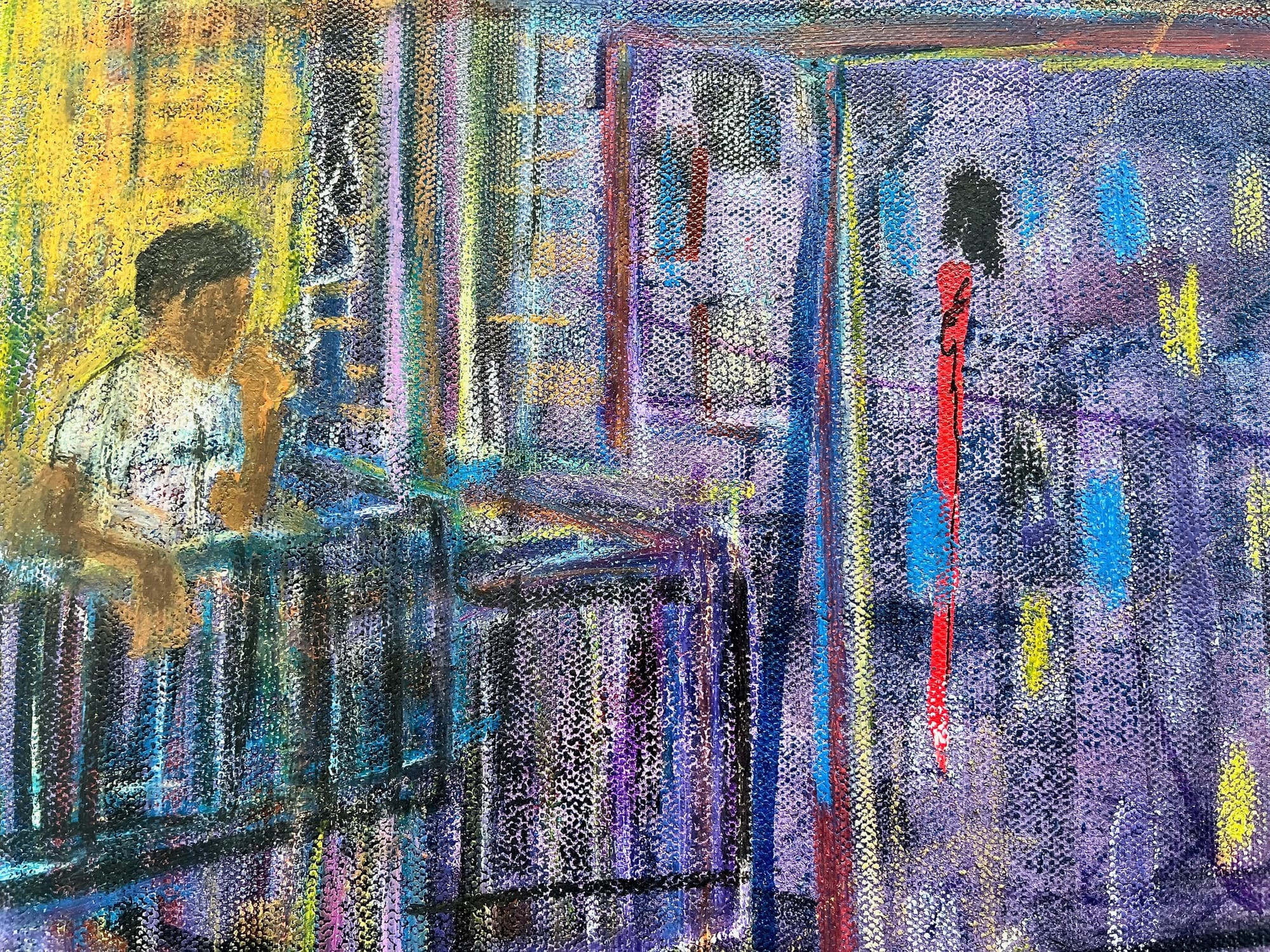

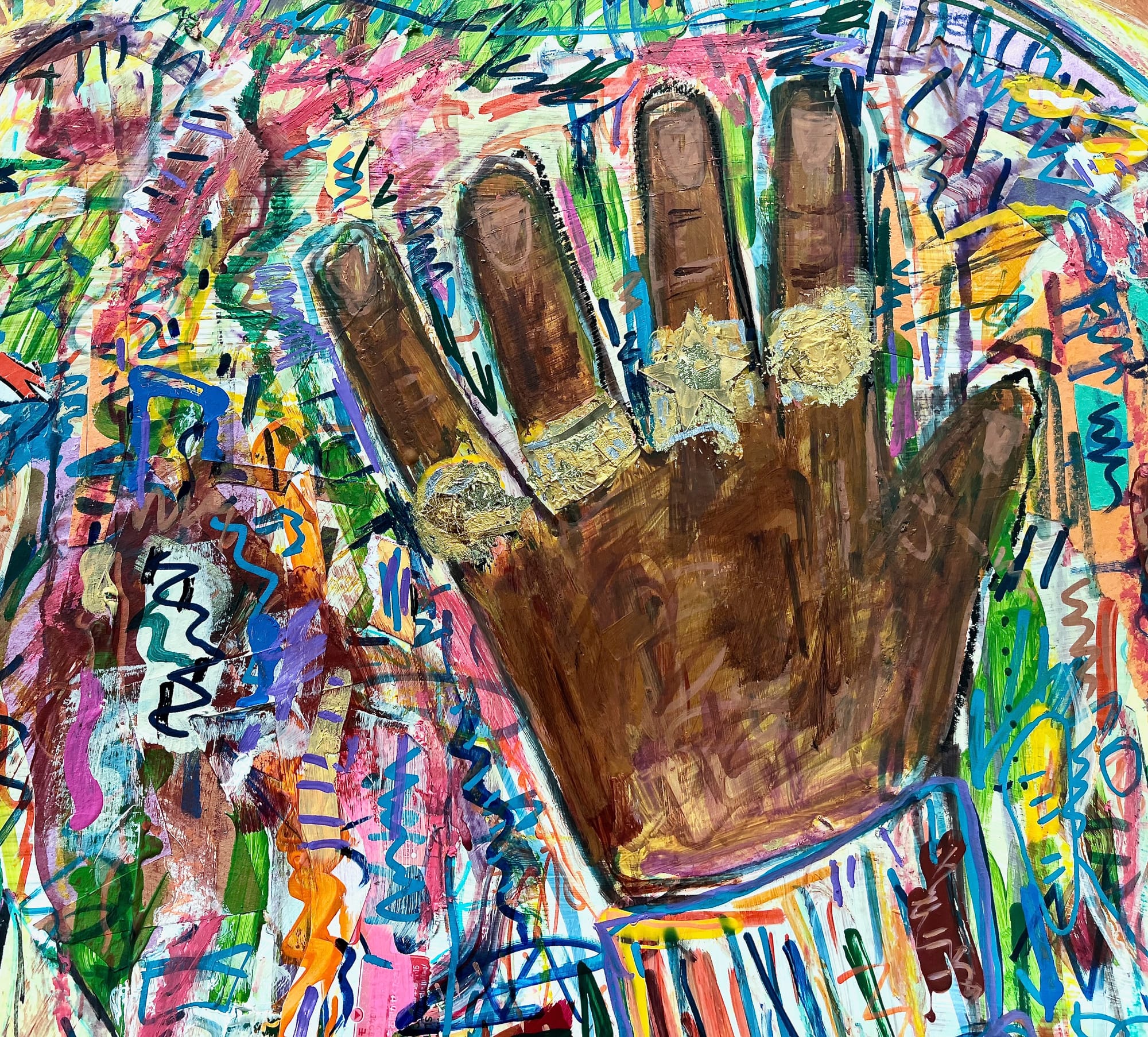
Details from Sheldon Draper's paintings, from top/left: "Ellington's Indigos," "Platinum Smiles (you can see what I’m sayin’ from half a mile),” and "Brooklyn." Photos by Emily Christensen for the SHOUT
Draper’s share of “Synchronicity & Blues” shows flashes of brilliance and a willingness to experiment, even as he revisits some of his favorite subjects. If this isn’t the early-career-defining exhibition I’d hoped for, I feel certain it’s coming.
Though their approaches diverge — Smith’s careful, Draper’s carefree — these two artists share laborious processes. Another similarity is an interest in community and collaboration. “Smith’s intricate ceramics are inspired by the depths of the sea and creatures that overcome change,” reads the exhibition text. “Each object in this body of work captures a moment of strength.” Lichen growing from a dead stump or a barnacle affixed to another sea creature are miles away from the improvisations of a jazz band or a basketball offense or streetwear. But each are expressions of ingenuity, all pointing toward survival in a challenging environment.
Visitor Note: “Synchronicity & Blues” is on view through Saturday, July 20, but the gallery will be closed for a private event beginning at 3 p.m. on Thursday and all day Friday.
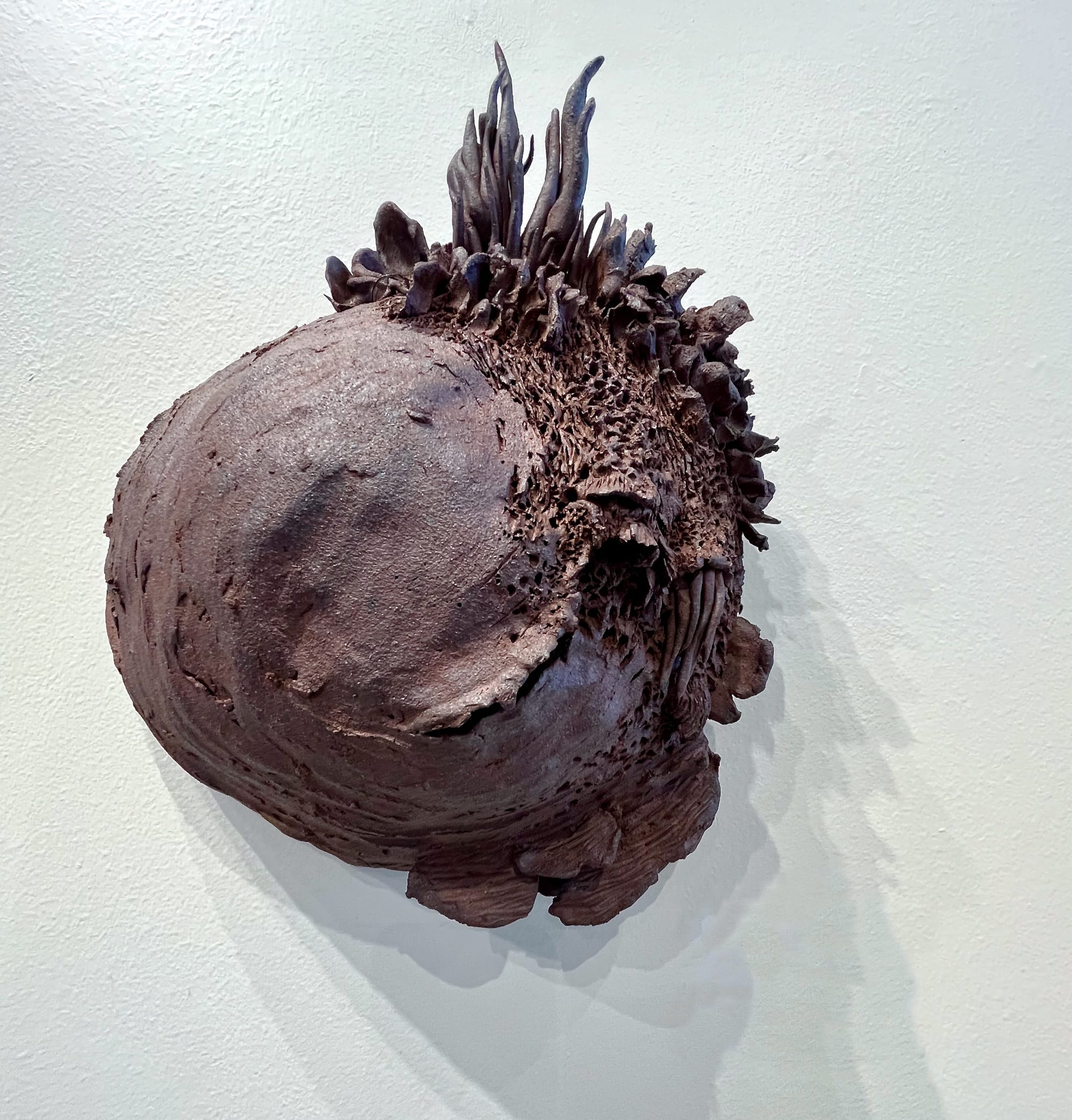
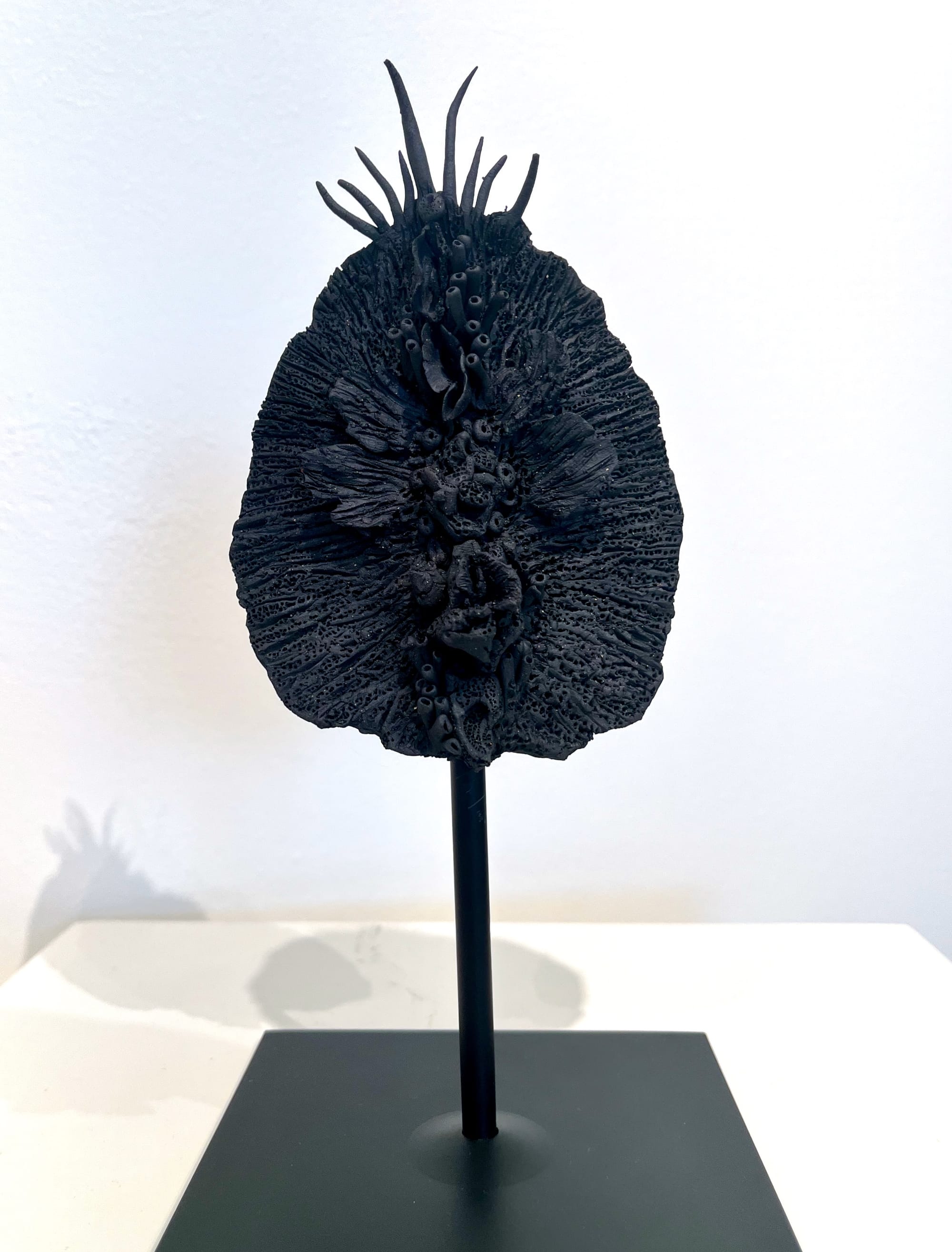
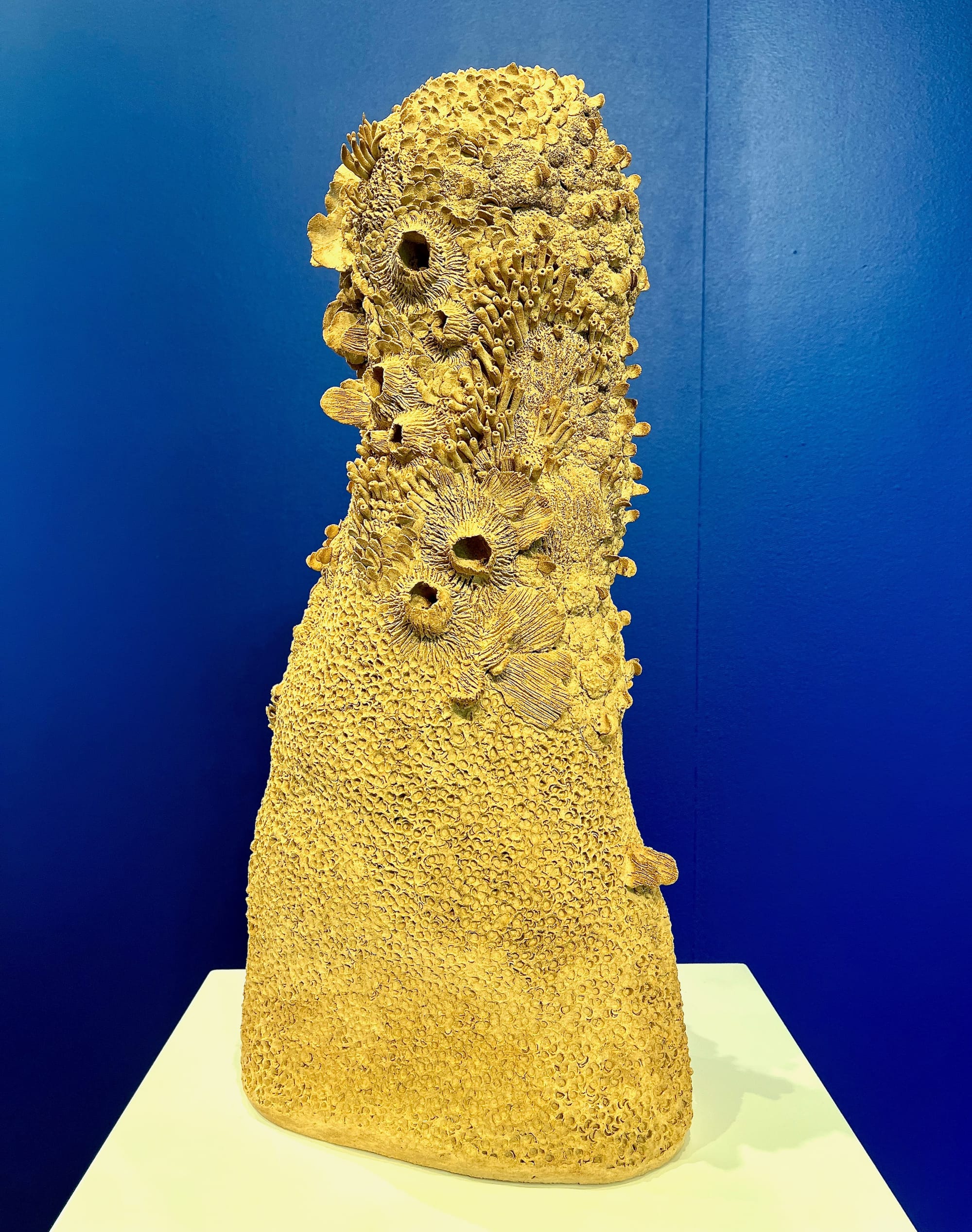
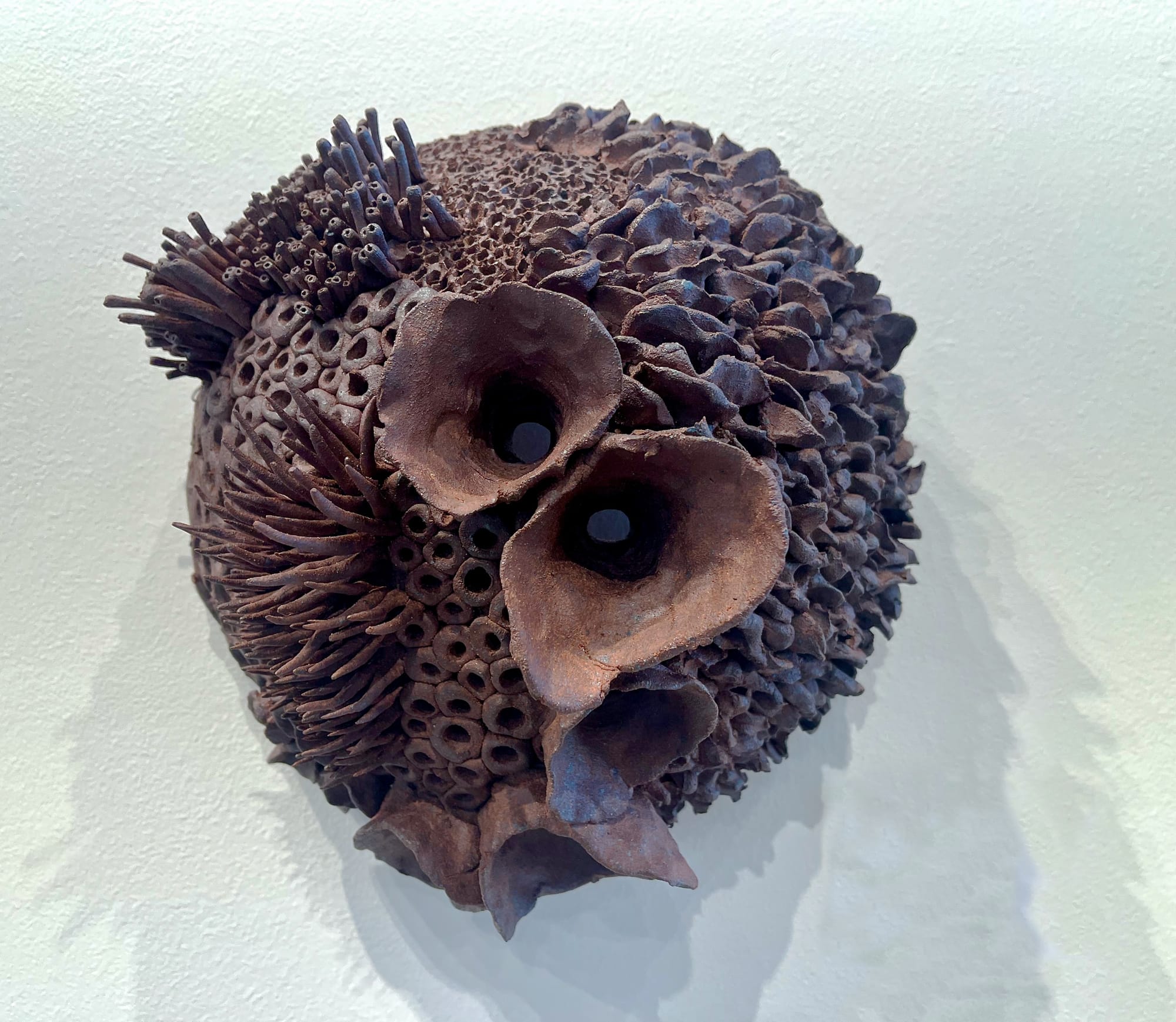
Works by Casey TZ Smith, from top left: “Synthesis 21.63,” stoneware, 10.5" by 12 by 6 inches; “Synthesis 25.42,” stoneware, 5 by 3 by 9 inches; “Synthesis 25.60,” stoneware, 13 by 14 by 23 inches; "Synthesis 21.61," stoneware, 11.5 by 10 by 7 inches. Photos by Emily Christensen for the SHOUT
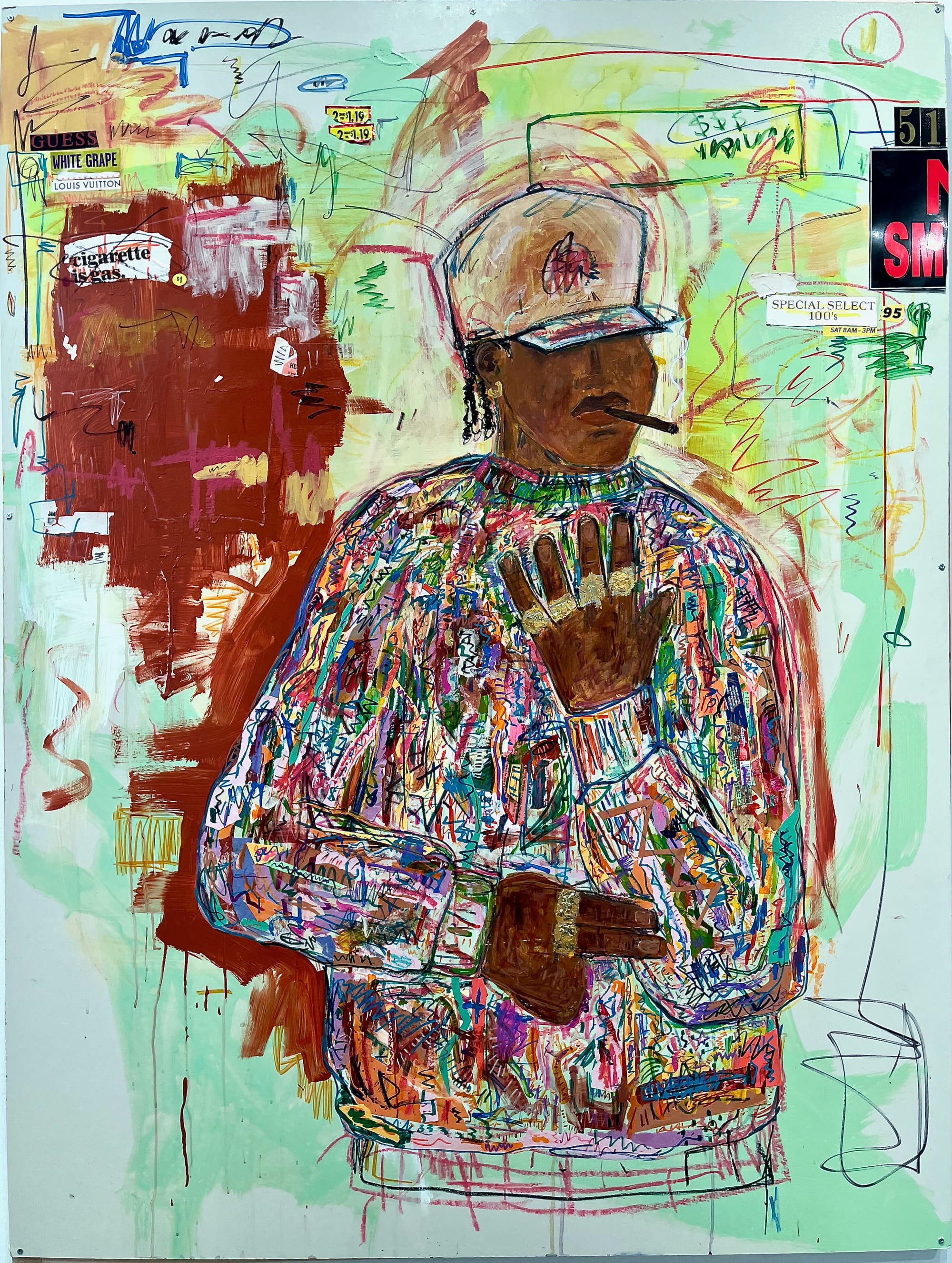
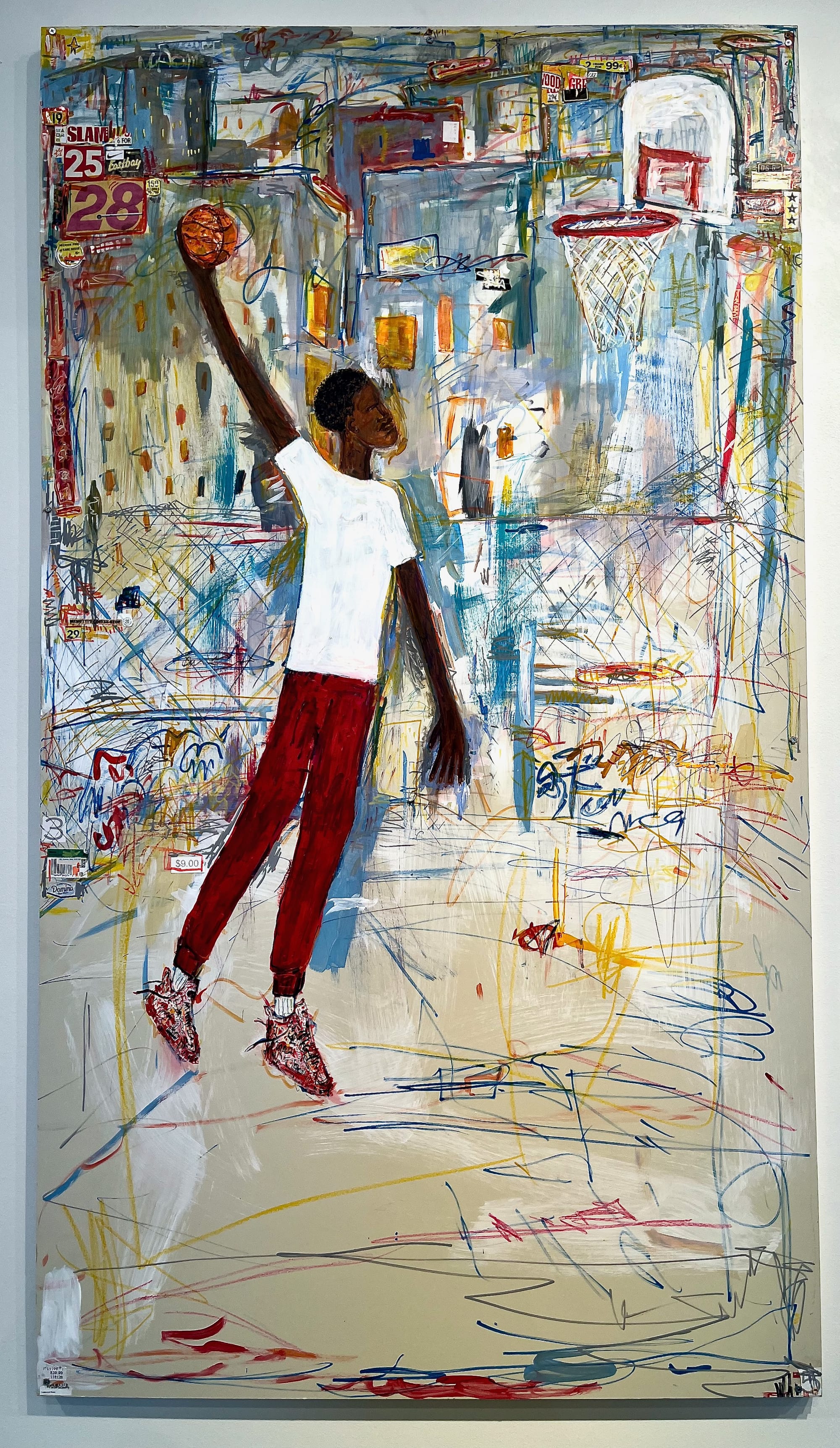
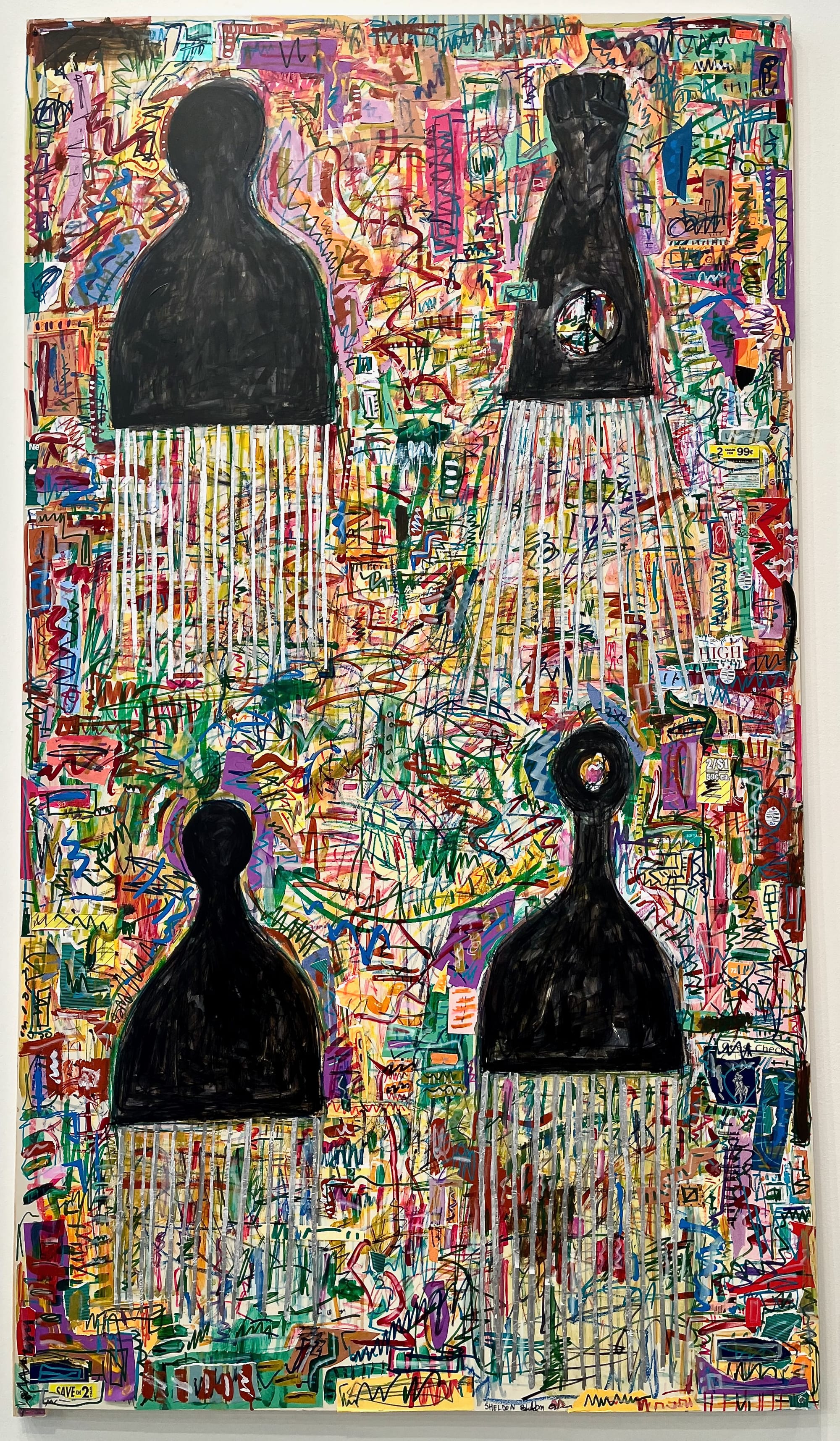
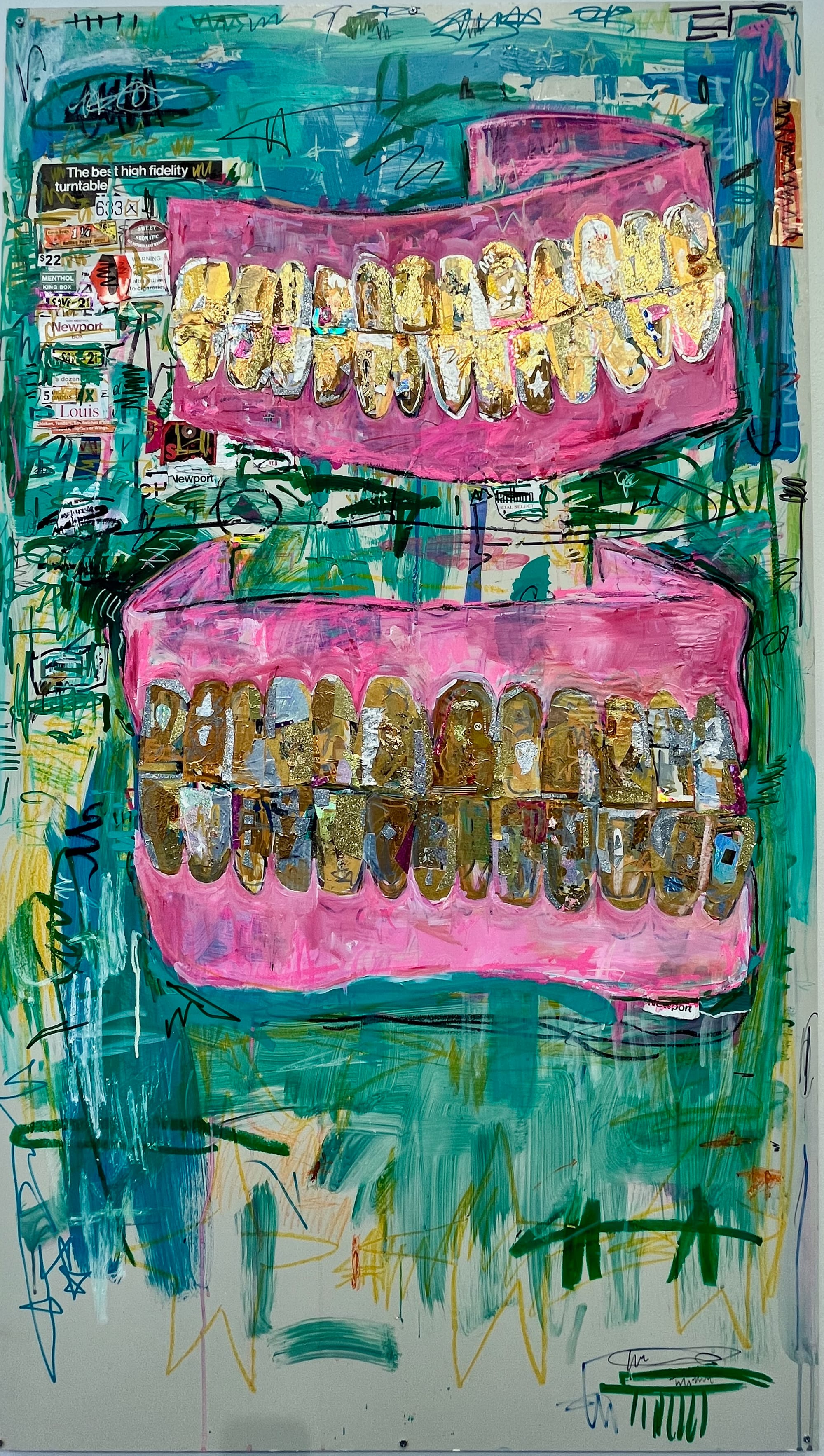
Works by Sheldon Draper from top left: “Brooklyn,” mixed media, 62.5 by 47 inches; “Hoopin,” mixed media, 62 by 35 inches; “Four Pics,” mixed media, 62 by 35 inches; “Platinum Smiles (you can see what I’m sayin’ from half a mile),” mixed media, 62 by 35 inches. Photos by Emily Christensen for the SHOUT
Correction: This review was updated on July 17 to reflect the correct closure times and dates: The gallery will close for a private event at 3 p.m. Thursday and all day Friday (July 18-19). It will be open to the public Saturday, July 20.
Emily Christensen is a freelance journalist and news entrepreneur based in Wichita, Kansas. She is one of the co-founders of the SHOUT.
Support Kansas arts writing
The SHOUT is a Wichita-based independent newsroom focused on artists living and working in Kansas. We're partly supported by the generosity of our readers, and every dollar we receive goes directly into the pocket of a contributing writer, editor, or photographer. Click here to support our work with a tax-deductible donation.
❋ Derby man has the kind of voice that turns heads — and chairs
❋ Socializing while sober: how some Wichitans are cultivating alcohol-free communities
❋ As a small creative business closes, the owner mourns
❋ Painting through it: Autumn Noire on 20 years of making art
❋ How a guy from Wichita resurrected 'Dawn of the Dead'
❋ Bygone Friends University museum housed curious collections
More visual arts coverage from the SHOUT
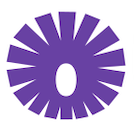 The SHOUTKsenya Gurshtein
The SHOUTKsenya Gurshtein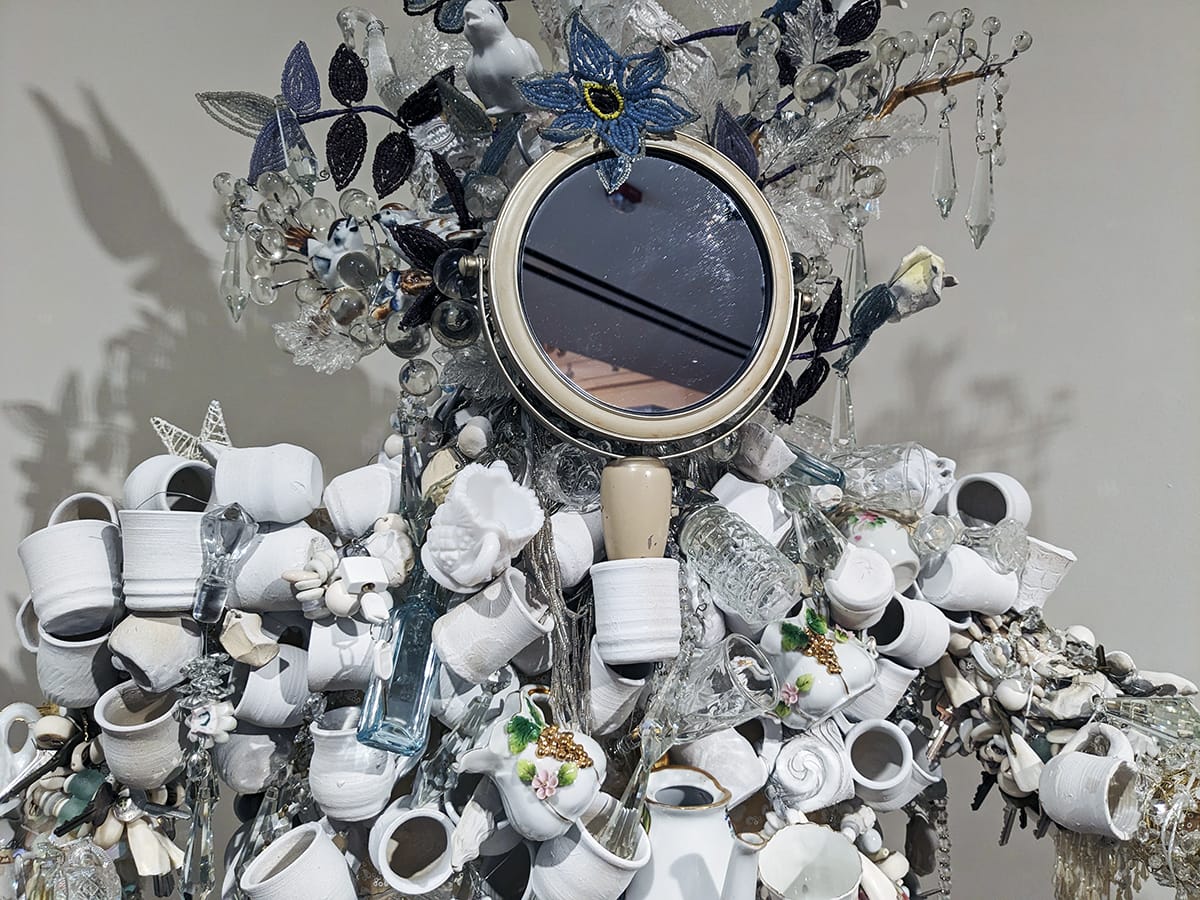
 The SHOUTConnie Kachel White
The SHOUTConnie Kachel White
 The SHOUTKrista Vollack
The SHOUTKrista Vollack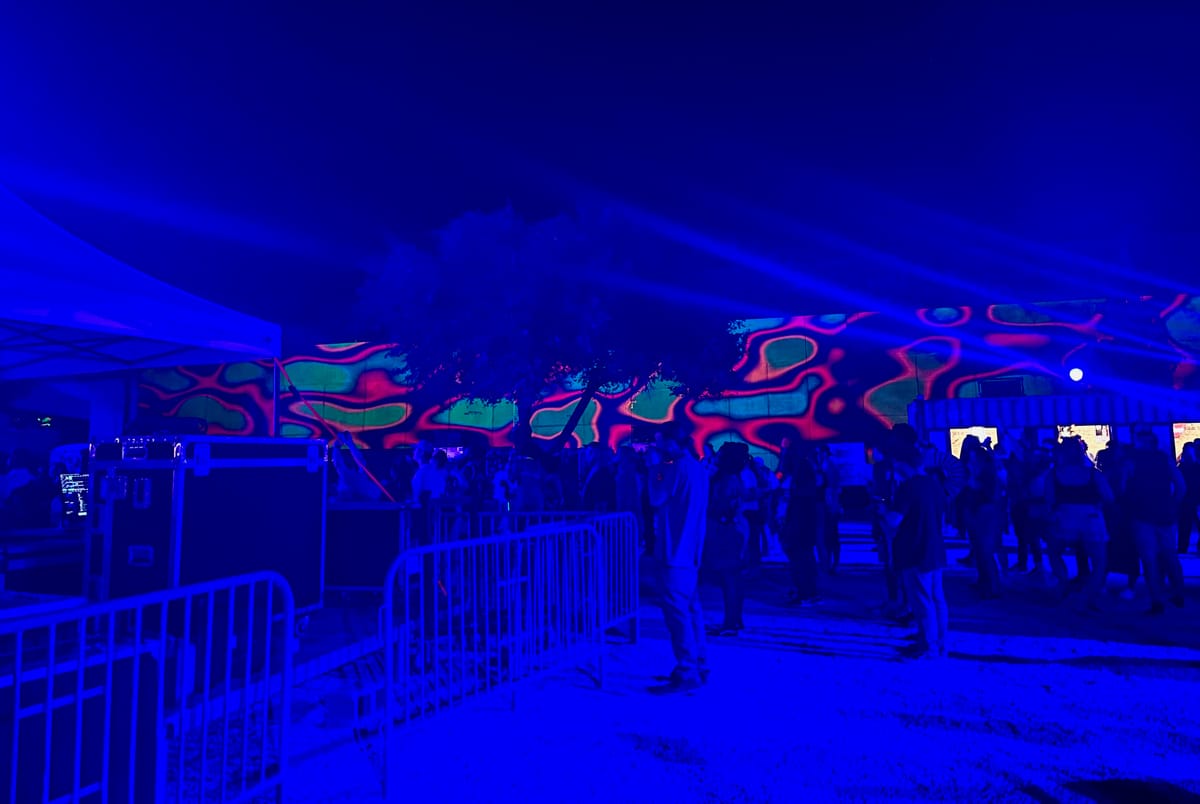
 The SHOUTKsenya Gurshtein
The SHOUTKsenya Gurshtein